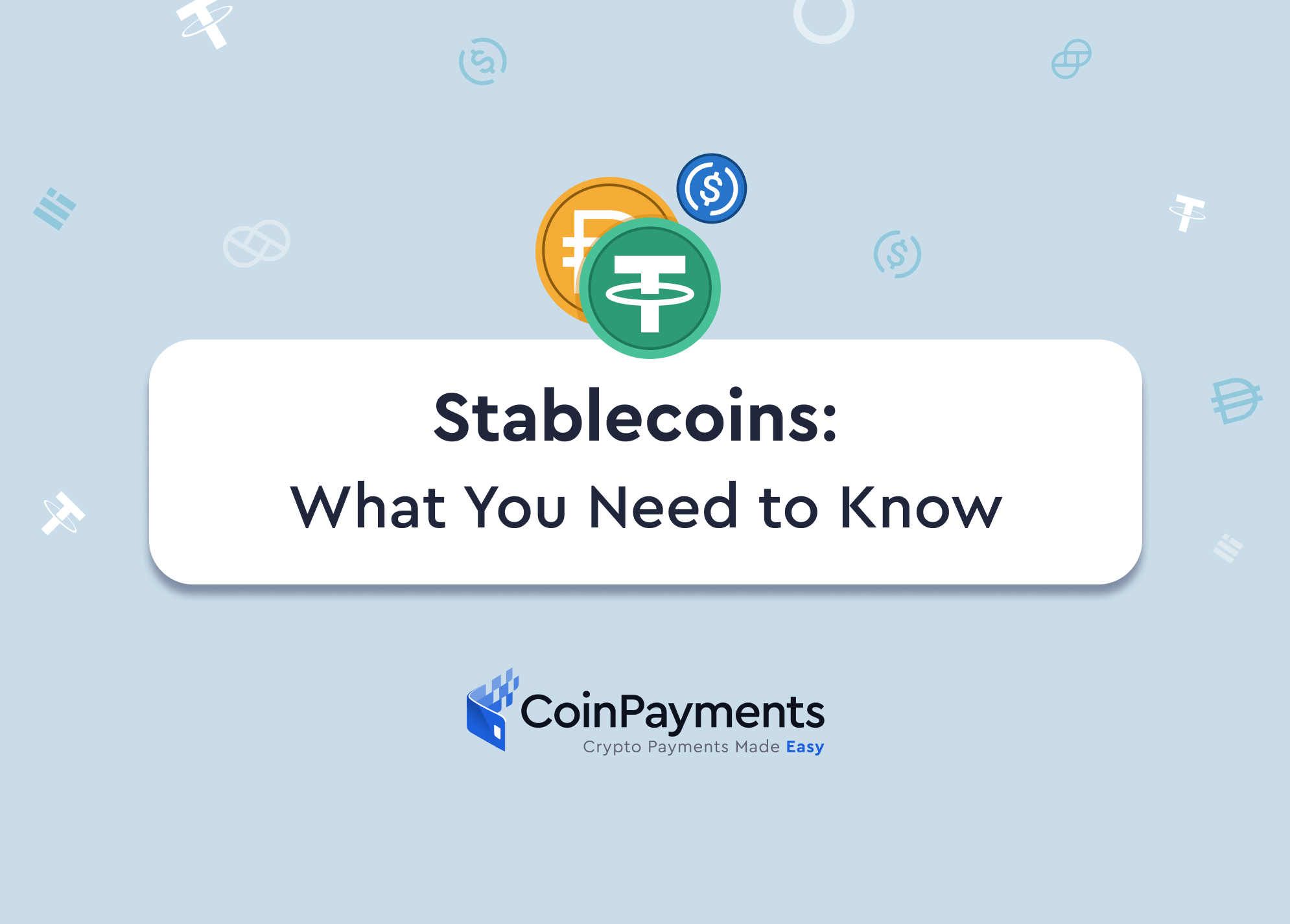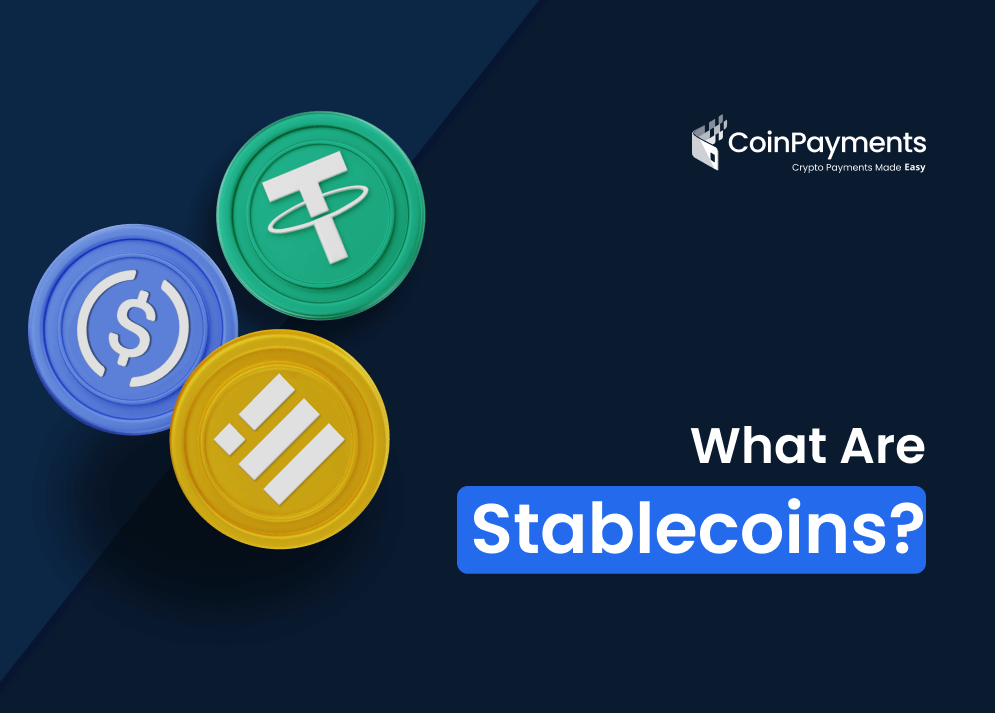
If you’re a merchant, you’ve probably never heard of stablecoins as a digital currency. But if you are interested in utilizing crypto and digital assets for your business – whether it’s to accept payments from customers or use it to purchase new equipment – you’ll want to understand what stablecoins are and what they can do for you and your business.
Stablecoins – What Are They?
In a nutshell, stablecoins are a type of cryptocurrency. But stablecoin activities are necessarily attached or “pegged” to a certain kind of stable reserve asset, like gold, the U.S. dollar, or other common types of economic commodities or mediums.
At their core, stablecoin arrangements are designed to help reduce the volatility inherent in currencies in the crypto ecosystem like Bitcoin, Litecoin, and so on. That’s because most cryptocurrencies are “unpegged,” meaning they aren’t attached to any inherently valued, stable, reserved asset like the U.S. dollar that safeguards value.
In other words, stablecoins bridge inherently volatile cryptocurrencies to other types of fiat currencies or commodities. They do this by lowering the volatility of coins overall.
For example:
- The U.S. dollar is one of the most stable currencies in the world
- A stablecoin like USDC is backed by the U.S. dollar, so its price is more stable than Bitcoin’s
So you can think of stablecoins as tools for the broader crypto market to help keep market prices relatively manageable instead of swinging by thousands of dollars each day.
How Do Stablecoins Work?
All stablecoins are designed with stability as their primary purpose for holder protection and market integrity. To be a stablecoin, a crypto token has to be backed by some type of reserve asset, like fiat currencies such as the US dollar or euro, or precious metals such as gold, silver, and more.
Of course, the type of backed asset for a given stablecoin will influence how volatile or risky it is overall. Fiat-backed stablecoins are generally the most stable since they are linked to centralized banks or federal financial systems. Thus, the fiat currencies’ prices are always controlled by some larger institution.
However, some stablecoins are backed by other cryptocurrencies, such as Bitcoin. Because of this, such stablecoins are more volatile since their prices could change rapidly relative to the price of Bitcoin.
The 4 Types of Stablecoins
There are four types of stablecoins you’ll find on the market. These are:
- Fiat-backed stablecoins are backed by fiat currencies like the U.S. dollar or the euro. Fiat-backed stablecoins have very limited price fluctuations but are quicker to face a loss in confidence than fiat currencies themselves.
- Crypto-backed stablecoins are backed by other crypto assets like Bitcoin. Naturally, these are a little more volatile than fiat-backed stablecoins, though they are usually over collateralized to ensure that the stablecoins remain relatively valuable for stablecoin issuers.
- Precious metal-backed stablecoins are backed by precious metals like gold. Like fiat-backed stablecoins, these coins almost always display stable value metrics since they are centralized.
- Algorithmic stablecoins are backed by computer algorithms. This sounds a little is esoteric and counterintuitive, but they help prevent the price of the stablecoin in question from fluctuating too much. For example, if an algorithmic stablecoin is supposed to be worth $5 but its price increases above this rate, the algorithm releases more stablecoin tokens to rein the price back in.
Different types of stablecoins are used by different institutions or even partnered cryptocurrencies for varying purposes.
Advantages of Stablecoins
Some of the advantages of using stablecoins include:
- They are very easy to buy and sell on a trading platform since you don’t need a regular bank account to hold stablecoins. Thus, the value of these coins can be sent around the world almost instantaneously, even if local currencies or fiat funds are unusable.
- There are very low transfer fees, so they are affordable to use.
List of Major Stablecoins
There are dozens of notable stablecoins to speak of, but let’s break down a few of the most important stablecoins.
Tether (USDT)
Today, Tether is the largest stablecoin by market capitalization (or percentage of the market controlled by this particular coin). As a blockchain-based cryptocurrency, Tether is a standard and reliable stablecoin originally backed by the U.S. dollar at a rate of 1:1.
Unfortunately, it was later revealed that Tether’s backing dollars were actually commercial paper rather than actual fiat currencies. However, Tether’s value didn’t change all that much. In fact, its usage has surged over the last couple of years. Tether alone is responsible for over half of all transactions made with stablecoins.
USD Coin (USDT)
USD Coin is the second-largest stablecoin in terms of market capitalization. USD Coin is Ethereum-based and is backed by the US dollar at a ratio of 1:1. You can find it on most crypto exchanges, and it can be transferred around the world in just seconds, thanks to its home on the Ethereum network.
As a result, it’s one of the most cost-efficient ways to transfer funds from person to person. Even better, it’s one of the most stable stablecoins since its dollar reserves are audited each month by a massive accounting firm.
TrueUSD (TUSD)
TrueUSD is another very reliable stablecoin with a large proportion of market capitalization. As its name suggests, this stablecoin is 100%-backed by the U.S. dollar. As a result, it’s very liquid and is great for making purchases.
Even better, TrueUSD is made by a team called TrustToken, which has a reputation for developing secure, reliable asset-backed crypto tokens. This stablecoin benefits from partnerships with banks, so some banking institutions store this crypto fund. It also has very low transaction fees compared to most wire transfers.
Paxos Standard (PAX)
Paxos Standard or PAX has a little less than $1 billion market capitalization, so it’s nowhere near as large as Tether. However, it’s still a popular stablecoin since it is very well regulated, and it is one of the few coins that the New York State Department of Financial Services has fully approved.
Currently, PAX is fully partnered with PayPal, so it’s a popular choice for making online or international payments. It’s currently enjoying an increased adoption rate and may become one of the most popular stablecoins in the next few years.
Binance USD (BUSD)
Binance USD is the stablecoin of choice for Binance. It’s backed by the U.S. dollar at a ratio of 1:1 and can be used on most Ethereum platforms. It’s good for regular commerce and for fast transactions around the world.
Like other stablecoins, it has also been approved by the New York State Department of Financial Services. There aren’t any fees for creating or redeeming these coins, so it’s fantastic if you already prefer the Binance exchange when making crypto transactions.
Summary
In the end, stablecoins play an important role in the larger crypto economy and are likely here to stay. Until the worldwide economy more fully adopts crypto tokens like Bitcoin and others, the financial stability oversight council will need to ensure that the crypto market is anchored by stabilizing forces like stablecoins.
On top of that, investors and vendors may eventually opt to rely on stablecoins more than other, more volatile cryptocurrencies. Since they are backed by stabler assets, stablecoins represent a great way to start accepting crypto tokens on your online store. They will likely be valuable if you try to exchange them for goods or services.
Luckily, CoinPayments allows you to accept all kinds of crypto tokens at your online store with our wide range of merchant tools and secure crypto wallet. Sign up for CoinPayments today and start accepting crypto for your business!
Sources:
Stablecoin Definition – Cryptocurrency | Investopedia
What Are Stablecoins and How Can I Invest in Them? | Cryptocurrency | US News
What are Stablecoins: Types, Examples, and More | Tech Times
The Bitcoin Whales: 1,000 People Who Own 40 Percent of the Market | Bloomberg
Virtual Currency Businesses: Virtual Currencies | New York State Department



